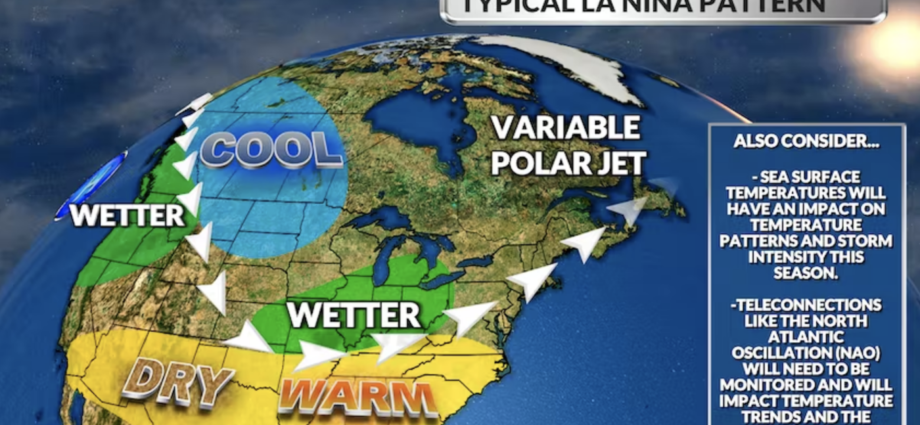
By Rafe Wright, Local Journalism Initiative Reporter, The Guardian
December 14, 2022
CHARLOTTETOWN, P.E.I. — P.E.I. residents looking to chill out this winter might be disappointed.
Temperatures across the province could stay above average throughout December and into January, as P.E.I. experiences another La Niña winter, according to weather projections from the UPEI Climate Lab in St. Peters Bay.
“Nobody is saying it’s going to be colder this winter,” climate lab director Adam Fenech told SaltWire Network on Dec. 6. “Not us, not Environment Canada and not the almanacs.”
Weather predictions such as this are usually made by following historical records to observe trends and patterns.
These predictions are typically accurate about 50 per cent of the time but have become increasingly more accurate in recent years, Fenech said.
“Climate is like a carousel. It goes up and down, and there is variability every year,” he said.

This year, it looks as though the trend P.E.I. has seen for the last two winters will continue, with less snowfall and higher-than-normal temperatures.
On average, the province typically gets about 303 millimetres of precipitation between December and February. The average temperature is usually about -6 C, but last year, the average was three degrees higher than normal, said Fenech.
This could have a seriously negative effect on winter crops like winter wheat or beets. It also gives invasive insect and plant species more time to root and grow throughout the province.
“I’m still seeing flies outside. At this time of year, it’s incredible,” he said.
“You can have warmer-than normal temperatures and still receive a good deal of snow during the season. Warm temperatures can translate into more mix weather events, leading to more snow.” – Allister Aalders

Many of P.E.I.’s migratory birds haven’t flown south yet due to the high number of insects still present in many areas, he said.
“The birds stick around if they see insects, but what does that mean for next spring? Maybe there are not going to be as many insects.”

“We’re starting to really recognize the negative effects that are happening, and it’s not looking good,” he said. “Climate change seems to be wreaking havoc.”
Most of Canada is projected to see a colder winter, with the only exception being the Maritimes.
SaltWire Network’s weather specialist Allister Aalders said during an interview on Dec. 7 there are several reasons for this, including that ocean temperatures in the North Atlantic continue to be well above average.
“With sea surface temperatures warmer than normal, that usually translates to warmer-than-normal land-based temperatures,” said Aalders.

This is caused by wind passing over warm surface water in the gulf, then passing through the province, making it difficult for any storm systems carrying snow to form.
There is also currently a blocking ridge of high pressure near Greenland, which typically holds stormier systems out.
The province will still experience cold snaps and heavy snowfalls throughout the winter, just with less frequency than in previous years.
![Sony PlayStation Store 110 - Sony, [Digital]](https://i0.wp.com/i5.walmartimages.com/asr/5d3e8d52-3525-4e75-b862-10394c67a31c.c3f21de9f6a2f65537248191772f43b3.png?w=1380&ssl=1)
“You can have warmer-than-normal temperatures and still receive a good deal of snow during the season. Warm temperatures can translate into more mix weather events, leading to more snow,” said Aalders.

That said, he added these warmer winters will likely become more frequent in the years to come.
Subscribe to our newsletter.
“As our climate continues to change, we will continue to see warmer temperatures, including during the winter months, especially with the trend that our sea temperatures (is) going,” he said. “It’s the perfect ingredients for strong storms to develop, so certainly the warming of the Atlantic is a trend that seems to be the result of climate change.”

